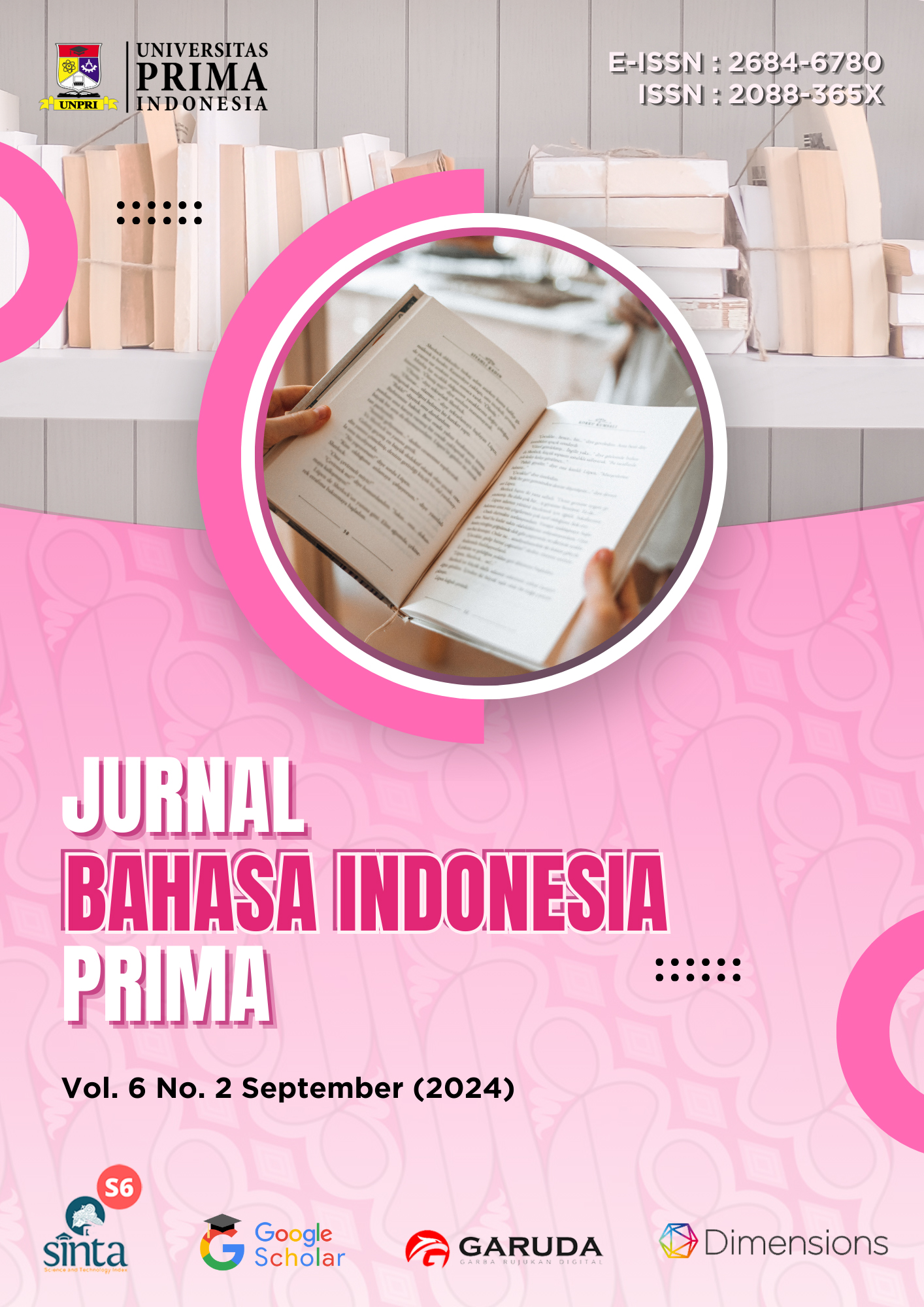Bahasa Indonesia sebagai Magnet Pariwisata : Analisis Keterkaitan Bahasa dengan Pengembangan Industri Pariwisata
##plugins.themes.academic_pro.article.main##
Abstract
Indonesians are essential in various social, cultural, and economic aspects. One interesting aspect that must be considered is Indonesians' contribution to developing Indonesia's tourism industry. In the context of tourism, Indonesia is an attraction that attracts tourists to various tourist destinations. Indonesian also has a vital role in tourism promotion activities. This research uses a descriptive method, and the purpose of this research is to describe, describe, analyze, and identify challenges and opportunities in the development of Indonesian as a means of communicating to improve the tourism industry in Indonesia. To optimize the role of Indonesians in the tourism industry, it is necessary to pay attention to the challenges faced, such as the diversity of languages in Indonesia. Therefore, the recommendation is that policies and programs, such as Indonesian language training for local communities, be supported, and the quality of translation of tourism promotional materials should be improved. By understanding the relationship between the Indonesian language and the development of the tourism industry, a positive synergy can be created between preserving the Indonesian language and culture and developing sustainable and highly competitive tourism.
##plugins.themes.academic_pro.article.details##

This work is licensed under a Creative Commons Attribution-ShareAlike 4.0 International License.
References
- Almalya Dewita Syawwal, & Salma Fatin Nabilah. (2023). Ragam Bahasa Indonesia Pada Bidang Pariwisata: Studi Kasus Penggunaan Bahasa Indonesia di dalam Bus Pariwisata. Jurnal Riset Rumpun Ilmu Bahasa, 2(1), 123–130. https://doi.org/10.55606/jurribah.v2i1.1150
- Antari, L. P. S. (2019). Bahasa Indonesia sebagai identitas nasional bangsa Indonesia. Jurnal Jisipol, 8(November), 17. https://doi.org/10.5281/zenodo.3903959
- Hikmah, J. (2020). Paradigm. Computer Graphics Forum, 39(1), 672–673.
- https://doi.org/10.1111/cgf.13898
- Kusumawati, T. I. (2018). Peranan Bahasa Indonesia Dalam Era Globalisasi. Nizhamiyah, 8(2), 68–77.
- Mailani, O., Nuraeni, I., Syakila, S. A., & Lazuardi, J. (2022). Bahasa Sebagai Alat Komunikasi Dalam Kehidupan Manusia. Kampret Journal, 1(1), 1–10. https://doi.org/10.35335/kampret.v1i1.8
- Marwanto, M. (2023). Peran dan fungsi pariwisata karimunjawa terhadap peningkatan bahasa indonesia. Indonesian Journal of Muhammadiyah Studies, 4(1), 40–48.
- http://ijmus.muhammadiyahsalatiga.org/index.php/ijmus
- Prihatsanti, U., Suryanto, S., & Hendriani, W. (2018). Menggunakan Studi Kasus sebagai Metode Ilmiah dalam Psikologi. Buletin Psikologi, 26(2), 126.
- https://doi.org/10.22146/buletinpsikologi.38895
- Purba, H., & Irwansyah, I. (2022). User Generated Content dan Pemanfaatan Media Sosial Dalam Perkembangan Industri Pariwisata: Literature Review. Professional: Jurnal Komunikasi Dan Administrasi Publik, 9(2), 229–238–229–238.
- https://jurnal.unived.ac.id/index.php/prof/article/view/3065
- Sudaryanto, Hermanto, H., & Gustiani, E. I. (2019). Media Sosial sebagai Sarana Pembinaan Bahasa Indonesia di Era Digital. Kode: Jurnal Bahasa, 1, 61–74.
- https://jurnal.unimed.ac.id/2012/index.php/kjb/article/view/16005
- Zellatifanny, C. M., & Mudjiyanto, B. (2018). Tipe Penelitian Deskripsi Dalam Ilmu Komunikasi. Diakom : Jurnal Media Dan Komunikasi, 1(2), 83–90.
- https://doi.org/10.17933/diakom.v1i2.20
- Zulianti, I., Fatmawati, M., Wahyu Ningtyas, A., Sari, N., & Wulandari, I. (2022). Analisis Penggunaan Bahasa Indonesia Sebagai Bahasa Pemasaran Dalam Bisnis Tiktok Shop. Academica : Journal of Multidisciplinary Studies, 6(2), 303–318. https://doi.org/10.22515/academica.v6i2.5708


